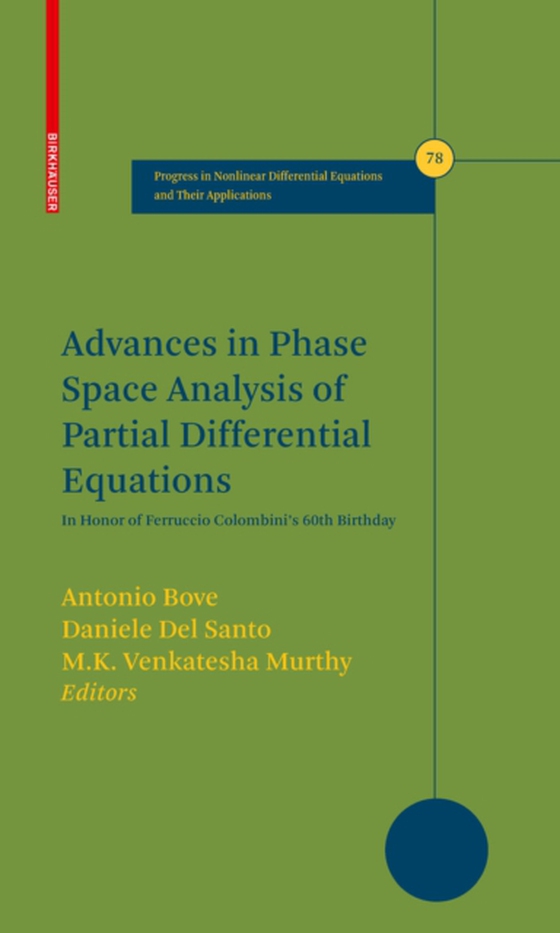
Advances in Phase Space Analysis of Partial Differential Equations e-bog
875,33 DKK
(inkl. moms 1094,16 DKK)
The present volume is a collection of papers mainly concerning Phase Space Analysis,alsoknownasMicrolocal Analysis,anditsapplicationstothetheory of Partial Di?erential Equations (PDEs). The basic idea behind this theory, at the crossing of harmonic analysis, functional analysis, quantum mechanics and algebraic analysis, is that many phenomena depend on both position and frequency (or wave numbe...
E-bog
875,33 DKK
Forlag
Birkhauser
Udgivet
18 september 2009
Genrer
Cybernetics and systems theory
Sprog
English
Format
pdf
Beskyttelse
LCP
ISBN
9780817648619
The present volume is a collection of papers mainly concerning Phase Space Analysis,alsoknownasMicrolocal Analysis,anditsapplicationstothetheory of Partial Di?erential Equations (PDEs). The basic idea behind this theory, at the crossing of harmonic analysis, functional analysis, quantum mechanics and algebraic analysis, is that many phenomena depend on both position and frequency (or wave numbers, or momentum) and therefore must be understood and described in the phase space. Including time and its dual variable, the energy, leads to the spa- time phase space. From this perspective major progress has been achieved in the analysis of PDEs over the last forty years, based on the development of powerful tools of microlocal analysis. A number of the following papers, all written by leading experts in their respective ?elds, are expanded versions of talks given at a meeting held in October 2007 at the Certosa di Pontignano, a former 1400 cloister sprawling on the hills surrounding Siena. The Siena workshop was in honor of Ferruccio Colombini on the occasion of his 60th birthday and it is our pleasure to dedicate to him this volume, to which a number of friends and collaborators promptly manifested their willingness to contribute. In this sense the present volume can be seen as a scienti?c portrait of Ferruccio. Many people deserve our gratitude. We would like to thank all the c- tributors as well as the people who took part in the workshop, who made a lively mathematical attendance.
 Dansk
Dansk

